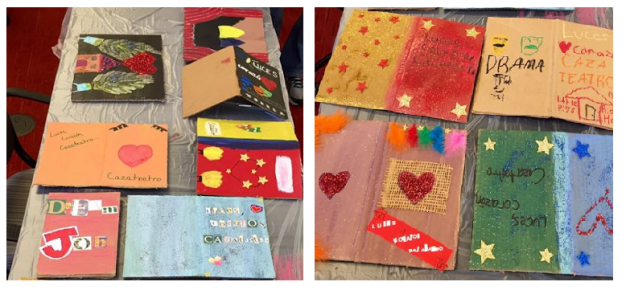Enlace para español/Link here for Spanish
Dear reader,
A friend was recently telling us about his first time on a plane: “Después la azafata nos explicó lo del cinturón, las salidas de emergencia y todo el rollo.” (Then the flight attendant explained about the seat belts, the emergency exits, and everything.)
 The last phrase, y todo el rollo, is a common idiom in Spanish to refer to the whole of something, with a sense of thoroughness and detail. Colloquial English has equivalents including “the whole nine yards,” “the whole shootin’ match” and others.
The last phrase, y todo el rollo, is a common idiom in Spanish to refer to the whole of something, with a sense of thoroughness and detail. Colloquial English has equivalents including “the whole nine yards,” “the whole shootin’ match” and others.
Spanish rollo means roll (e.g. of paper). How is it that it can also mean mean something like “the whole nine yards,” with the sense of completeness or tedium?
Before books became commonplace, documents were written on parchment arranged in rolls. The most famous of these was the Torah, the Hebrew Pentateuch (Genesis, Exodus, Leviticus, Numbers, and Deuteronomy) that is the origin and ancestor of what we know today as the Bible.
Here’s where a colloquial English expression, slightly outdated but still common, comes in: “the whole Megillah.” The phrase, carrying the same sense and tone of todo el rollo, undoubtedly arose among Yiddish speakers (as were nearly all Ashkenazi Jews, that is, those of European origin, as distinct from the Sephardim of Spanish and North African origin) using the deeply-familiar Hebrew word. The expression in Yiddish: gantse megillah.
The cartoon character “Magilla Gorilla” derives its name from the colloquial use of this word.
Megillah offers a fascinating case of a word whose origin is sacred and which takes on a colloquial meaning that is profane (in the strict sense of worldly, non-religious) and humorous.
¡Buenas palabras! … Good words!
Pablo J. Davis


 Introducing the “Cartonera” phenomenon! This truly grassroots movement was born in Argentina during the early 2000’s economic crisis. Cartoneras are cooperative, neighborhood-based publishing ventures. They’ve spread throughout Latin America.
Introducing the “Cartonera” phenomenon! This truly grassroots movement was born in Argentina during the early 2000’s economic crisis. Cartoneras are cooperative, neighborhood-based publishing ventures. They’ve spread throughout Latin America. t your gullible listener. (French “Poisson d’Avril!” and Italian “Pesce d’aprile!¨ both mean “April fish”).
t your gullible listener. (French “Poisson d’Avril!” and Italian “Pesce d’aprile!¨ both mean “April fish”). The odd chance that Sun (Sol) and Moon (Luna) appear the same size in the earthly sky, has surely reinforced human cultures’ seeing them as a pair representing male/female, gold/silver, night/day. The moon-female tie runs deep: the lunar phases find an echo in woman’s menstrual cycle.
The odd chance that Sun (Sol) and Moon (Luna) appear the same size in the earthly sky, has surely reinforced human cultures’ seeing them as a pair representing male/female, gold/silver, night/day. The moon-female tie runs deep: the lunar phases find an echo in woman’s menstrual cycle.

